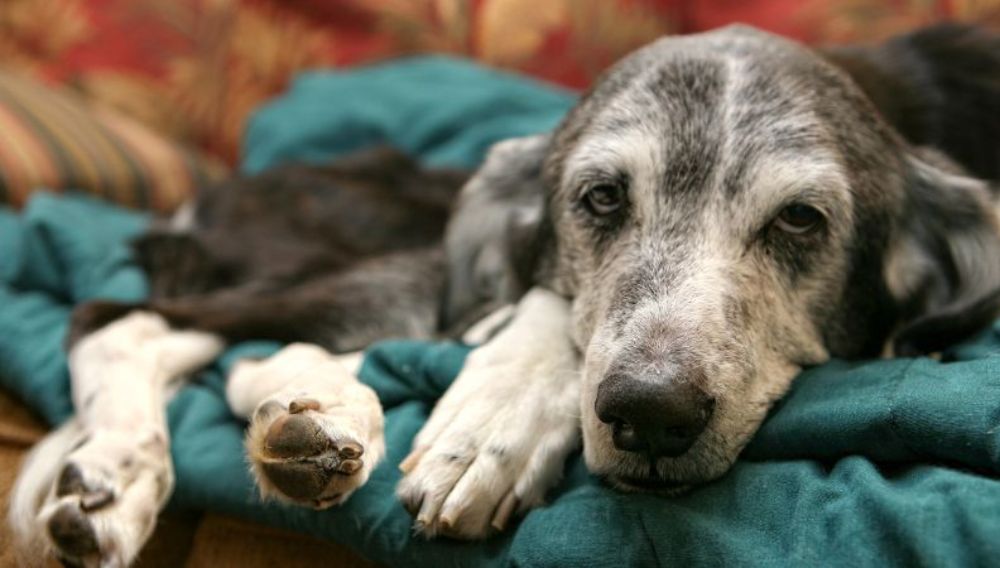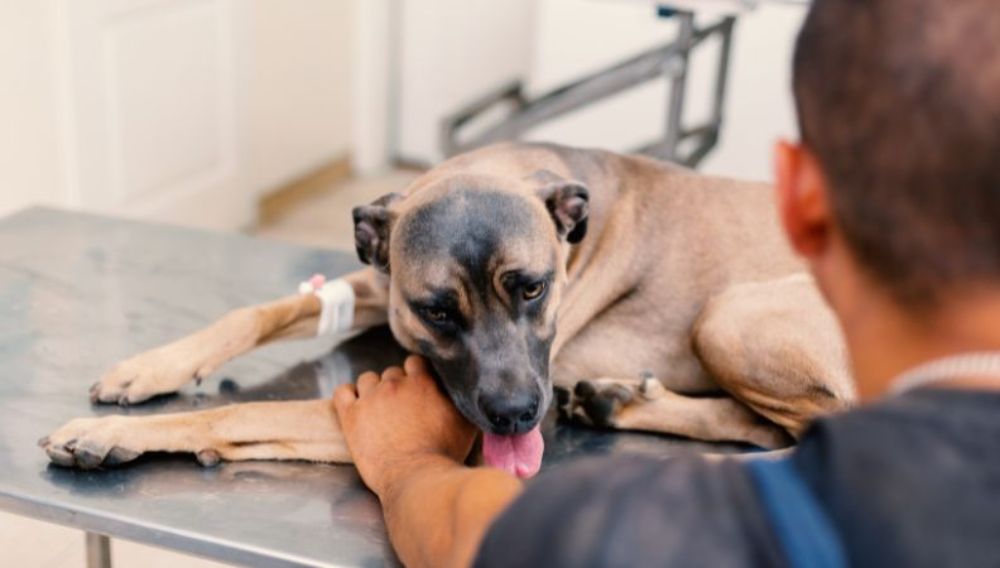
If you think your dog has been poisoned, seek veterinary advice immediately. Your quick thinking could save your dog’s life. This guide will help you spot the signs of poisoning and lists the common foods, plants, and other substances that are poisonous to your dog. It also provides information on how to keep your dog safe and how to deal with any potential poisonings.
Spotting the Symptoms of Dog Poisoning
In many cases, owners will be aware if their dog has eaten something they shouldn’t have or been in contact with. But sometimes you may only suspect your dog has been poisoned when they suddenly appear ill.
Signs and symptoms of poisoning in dogs include sudden difficulty in breathing, seizures (fits) or severe vomiting and diarrhoea may be life-threatening signs that your dog has been poisoned.
Every poison has a different effect but often cause respiratory, gastrointestinal or neurological symptoms. Keep an eye out for any of the following signs of poisoning in dogs:
- Restlessness or drowsiness
- Vomiting or diarrhoea
- Salivation/drooling from mouth
- Breathing difficulties
- Muscle twitching, tremors or seizures, ataxia (being wobbly)
- Confusion, any change in behaviour, abnormal reaction to light or sound, hallucinations
- Unusual smells (from breath or skin)
- Bite marks
- Burns to mouth or tongue
- Changes in gum colour (blue, pale or very red)
- Skin inflammation or irritation
- Foreign material passed in stools
Always remember to write any dog poisoning symptoms down - they can be very helpful for your vet.
What Foods are Poisonous to Dogs
Some dogs will eat everything and anything, and this is why you should always be vigilant with what your dog eats. We may all know that chocolate is a big no-no for dogs, even small amounts. This is because chocolate contains a substance called theobromine which dogs are very sensitive to. The amount of theobromine varies according to the type of chocolate so always tell your vet the type of chocolate that your dog has eaten.
Dark chocolate and baking chocolate have higher theobromine levels than milk or white chocolate and so are more toxic. There are some online chocolate toxicity calculators available.
If your dog has greedily devoured some chocolate, they may show signs of poisoning within an hour and complications can lead to death within 24 hours if a large amount of chocolate has been eaten. Call your vet immediately - your dog will need emergency treatment.
People foods toxic to dogs:
- Chocolate
- Nuts, especially Macadamia nuts, and foods containing nuts
- Onions, garlic, chives and other members of the Allium family
- Grapes and raisins, so no mince pies
- Xylitol - chewing gum and other sugar free food and drink containing this ingredient with this artificial sweetener
- Alcohol
- Mouldy food
- Raw bread dough
- Baked cookies and brownies containing cannabis
- Dogs are also very sensitive to caffeine so any drinks containing this should not be given, and no tea bags or coffee beans
What Plants are Poisonous to Dogs
Plant poisonings are fortunately rare, but puppies may be tempted to nibble at some toxic plants. The following plants should be avoided:
- Anthurium
- Arum (cuckoo pint, lords and ladies)
- Autumn crocus
- Calla lily
- Castor oil plant
- Cotoneaster
- Daffodil
- Dieffenbachia (Leopard Lily)
- Foxglove
- Holly
- Honeysuckle
- Horse chestnut
- Ivy
- Laburnum
- Lillies, Lily of the valley
- Marijuana (cannabis plant)
- Mistletoe (watch out for this one at when keeping your dog safe Christmas time)
- Oleander
- Philodendron
- Pieris
- Poinsettia
- Pyracantha
- Rhododendron
- Rhubarb
- Rowan
- Tobacco plant
- Yew
Other Poisonous Things Your Dog Might Eat
You should also keep your dog away from the following substances:
- Anti-freeze (ethylene glycol)
- Blue-green algae: don’t allow your dog near water with any blue-green algae. The algal blooms contain toxins that can cause severe illness or even death.
- Cocoa mulch: contains theobromine (see above).
- Human medicines: pain killers, flu and cough medicines, heart medication, and psoriasis creams can be toxic to dogs.
- Pesticides, insecticides and fertilisers
- Poisonous mushrooms
- Rat poisons
- Slug and snail pellets

How to Keep Your Dog Safe from Poisons
Almost all cases of poisoning are accidental and usually caused by substances we commonly have around the house and garden. The best way to prevent poisoning is to keep all poisons out of sight and reach of your pets. Here are some tips:
- Read the product label and follow the instructions for correct use
- Make sure lids are replaced correctly to prevent spillage if the container is knocked over
- Clean up drips and spills promptly
- Dispose of empty containers and waste food safely
- Dispose of unwanted medicines safely
- Put pest control products in pet-proof containers before putting them out
- Be vigilant when walking your dog to ensure it does not pick up or eat any unusual things
- Puppies are more likely to be affected. They often chew strange objects so be extra vigilant with them
Treatment for Dog Poisoning
If you suspect your dog might have been poisoned, you should know about dog poisoning treatments and take the following steps:
- Remove your dog from the source of the poison/toxic substance.
- If safe to do so, remove any suspect material from the animal's mouth.
- Don't let other people handle your pet (disorientated or frightened animals may become aggressive).
- Allow your dog to drink water as this may dilute ingested poisons.
- Contact your vet for advice and be prepared to take your pet and the suspect material or product to the vet surgery. If the source of the poison is unknown, scrape a sample of vomit or diarrhoea into a jar for the vet to test.
- The sooner a poisoned animal receives treatment, the higher its chances of recovery. If you can, phone the vet surgery in advance to warn them that you are on your way and give them details of the possible poison and symptoms your dog is showing. In most cases the best course of action is to get your pet to your vet as soon as possible, but you may be advised to give some immediate first-aid treatment at home.
- If your pet has a toxic substance on their skin or coat the worst of the contamination can be washed off to reduce further absorption. Wear protective clothing and use water only, making sure you do not get contaminated in the process.
- Don’t try to make your dog vomit (unless specifically instructed to do so by your vet). If your dog vomits when they are not fully conscious, this can lead to choking and vomit entering their lungs. Never give salt water to make your dog vomit - this can cause salt poisoning.
- At the surgery your vet may give drugs to make your dog vomit and/or give activated charcoal to absorb the poison. There are antidotes for some poisons but not for all. Further treatment will depend on what has been taken, the dose and the clinical condition of your pet. Your dog may be admitted for a short period of observation or hospitalisation for monitoring and treatment.
Prevention is the key. We know it's difficult to monitor everything your dog eats, but being vigilant and keeping dangerous substances out of reach is a start. Knowing the signs of dog poisoning will also help so you can get your dog the treatment they need when they need it, and help prevent life threatening conditions like liver failure or kidney failure.
Everypaw Dog Insurance
Everypaw's Dog Insurance comes with 24/7 unlimited access to vets and vet nurses that can help with your pet's health, care, nutrition and behaviour. So you can rest assured your pup will be well looked after.
Content provided from Vetstream's Vetlexicon Canis - www.vetstream.com/treat/canis
Vetlexicon is the world’s largest peer-reviewed online clinical reference source. All our content is written and peer-reviewed by over 1,000 of the world’s leading veterinarians, ensuring relevance, accuracy and quality.
- Vetstream Ltd, Nicola Bates (online) Poisoning. In: Vetlexicon Canis. Vetstream Ltd, UK. Website: https://www.vetlexicon.com/canis/internal-medicine/client-factsheets/poisoning/
- Vet Folio, Vetstream Ltd (online) Chocolate toxicosis. In: Vetlexicon Canis. Vetstream Ltd, UK. Website: https://www.vetlexicon.com/treat/canis/client-information/chocolate-toxicosis
- Lisa Moore, Nicola Bates (online) Theobromine / Chocolate poisoning. In: Vetlexicon Canis. Vetstream Ltd, UK. Website: https://www.vetlexicon.com/treat/canis/diseases/theobromine-chocolate-poisoning
- Nicola Bates (online) Poisoning: overview. In: Vetlexicon Canis. Vetstream Ltd, UK. Website: https://www.vetlexicon.com/treat/canis/diseases/poisoning-overview
- Alexander Campbell, Rosalind Dalefield (online) Xylitol toxicity. In: Vetlexicon Canis. Vetstream Ltd, UK. Website: https://www.vetlexicon.com/treat/canis/diseases/xylitol-toxicity
- Alexander Campbell, Patricia Talcott (online) Raisin poisoning. In: Vetlexicon Canis. Vetstream Ltd, UK. Website: https://www.vetlexicon.com/treat/canis/diseases/raisin-poisoning
- Alexander Campbell, Vetstream Ltd (online) Poisonous plants: overview. In: Vetlexicon Canis. Vetstream Ltd, UK. Website: https://www.vetlexicon.com/treat/canis/freeform/poisonous-plants-overview
- Rosalind Dalefield, Patricia Talcott (online) Mushroom poisoning. In: Vetlexicon Canis. Vetstream Ltd, UK. Website: https://www.vetlexicon.com/treat/canis/diseases/mushroom-poisoning
- Elizabeth Youens, Vetstream Ltd (online) Blue-green algae poisoning. In: Vetlexicon Canis. Vetstream Ltd, UK. Website: https://www.vetlexicon.com/treat/canis/client-information/blue-green-algae-poisoning
- Nicola Bates, Vetstream Ltd (online) Human medicines and pets. In: Vetlexicon Canis. Vetstream Ltd, UK. Website: https://www.vetlexicon.com/treat/canis/client-information/human-medicines-and-pets
- Nicola Bates, Neus Elias (online) Garden hazards – how to keep your dog safe. In: Vetlexicon Canis. Vetstream Ltd, UK. Website: https://www.vetlexicon.com/treat/canis/client-information/garden-hazards-%E2%80%93-how-to-keep-your-dog-safe